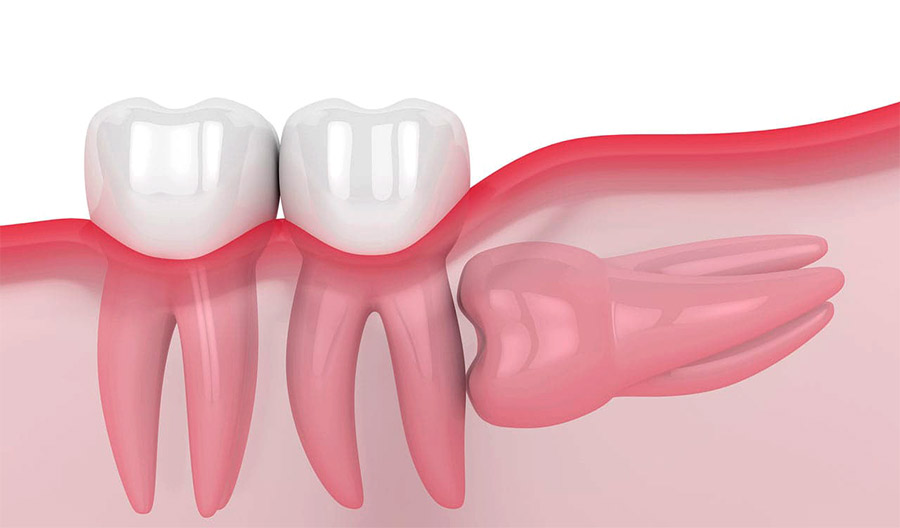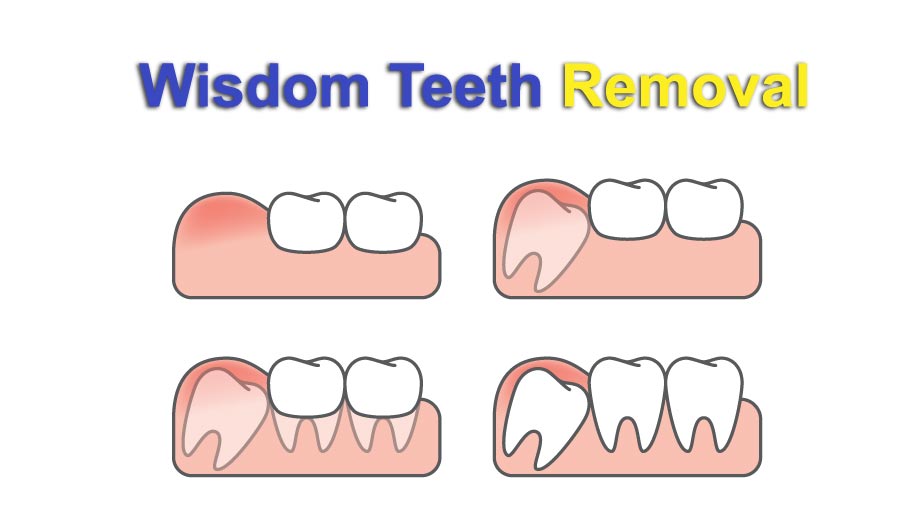Wisdom Tooth Extraction । Dental Chat
Wisdom Tooth And Third Molars
Wisdom Tooth problem questions are one of the most commonly asked dental questions on Dentalchat - In this Wisdom Tooth Blog, we will discuss Wisdom Teeth and Third Molar Extraction treatment. The more one knows or researches before getting any oral surgery do, the more one can prepare. We will be discussing wisdom teeth / third molars in this article.

Humans generally have 32 teeth in the adult mouth. Wisdom teeth cause many people issues. We at DentalChat get many questions about third molars - Wisdom Tooth Questions and what to do after a wisdom tooth extraction. This article will be discussing wisdom teeth / third molars blog - discussing how they evolve and also, discussing wisdom tooth extraction.
Everything you need to know about wisdom tooth extraction
Teeth are generally put into quadrants or sections by dentists. Within these, teeth are put into what dentists say are anterior teeth and posterior teeth. Wisdom teeth are posterior teeth. These teeth have various names such as incisors, canines, premolars, and molars. The molar's job is to crush the food we eat before swallowing. The molars are large, flat teeth at the back of the mouth.
Adult humans usually have 3 molars per side on both the top and bottom, for a total of twelve. The farthest back, usually the last to erupt molar (rear-most molar) in each quadrant is what is usually called the wisdom tooth. Since the wisdom tooth or 3rd molar doesn’t erupt from the gums into the mouth until much later than the other permanent teeth - usually occurring sometime in the late teens or early adulthood. Whether the wisdom teeth will cause pain or need to be removed is based on the size of the mouth and jaw, as well as the size and position of the other teeth. Some people do not have all four wisdom teeth, and some people will need some or all or none of them removed.
Wisdom teeth are thought to have served as additional molars for the purpose of chewing up tougher foods in the pre-agriculture age. The extra molars would have made it easier to grind up and extract nutrients from tougher plants in the human diet. The rise of agriculture made eating and chewing easier since the foods were softer and more calorie-dense. This has led to a smaller jaw and mouth for most people with less room for the wisdom teeth.
Wisdom teeth removal
People with wisdom teeth without enough room in the mouth may want to plan on having their wisdom teeth/wisdom tooth removed by a dental surgeon. Sometimes, without removal or extraction, the wisdom teeth may possibly cause bite problems, cavities, and can push other teeth out of position. Removal of a wisdom tooth is generally done under local or general anesthesia or with sedation. Speak with your dental surgeon about your comfort level with the different options.

Due to pain and sedation, you should plan on having a friend or family member drive you home from your appointment. The process includes numbing the area around the tooth, then an incision into the gums is performed. The bone around the tooth is removed and then the tooth is sectioned and removed in pieces.
Sometimes your dental surgeon may recommend the removal of only the top part of the tooth.
This procedure is referred to as a coronectomy. This procedure has pros and cons and you will want to discuss these with your surgeon. Having a coronectomy may lead to later operations to remove the rest of the tooth and can cause persistent pain and infection.
Post-operative / Post removal - After Getting a Wisdom Tooth Pulled Discussion:
Post-surgical care generally includes pain relievers like ibuprofen or acetaminophen. Antibiotics may also be prescribed depending on the patient’s medical history and susceptibility to infection. Extra caution should be taken to avoid alveolar osteitis, an infection of the bone commonly referred to as a dry socket.
Dry socket can occur in up to 5% of tooth extractions and up to 25% of wisdom teeth removals. Symptoms of dry socket include pain which can last over a month, halitosis (bad breath) and a foul taste in the mouth.
The causes of dry sockets are not fully understood. After a tooth is removed the body should form a blood clot in the empty socket and this blood clot should not be removed. This clot forms the basis for the body to create a stable clot and then begin reforming bone in the area. If the clot is removed or cannot form correctly this leads to dry socket. Some contributing factors to dry socket include:
- Smoking
- Infection
- Trauma during tooth extraction
- Hormonal changes from birth control medications or menstrual cycle
You can take steps to reduce the chance of getting dry sockets:
- Not smoking. Smoking reduces blood flow and can prevent proper blood clot forming. Use a nicotine patch after your tooth extraction until the area is healed.
- Avoid drinking through straws and spitting. The suction created can pull the clot out of the socket.
- Avoid hot foods and especially hot liquids for a few days. These can affect the local blood flow to the area.
- If recommended by your dental surgeon, take all antibiotics as prescribed to avoid infections.
After Wisdom Tooth Extraction Food Eating - Dental suggestions: After your wisdom teeth are removed you should plan on a change in diet until the area is healed. Before your procedure stock your fridge and cupboard with easy to prepare and eat soft foods. A few great recommendations include:
- Ice Cream – Pick a smooth flavor without too many chunky ingredients that could get into the empty sockets.
- Soup – a creamy soup-like tomato or butternut squash is a great choice served warm – not too hot.
- Smoothies – This is a great time to start a habit of healthy green smoothies, including fruits and vegetables with a base of coconut or yogurt.
- Oatmeal – like the ice cream recommended above, be careful of having too many chunky ingredients. Also, avoid eating it too hot. After preparing let it cool for a few minutes.
- Mashed potatoes or sweet potatoes are excellent. After boiling the potatoes and mashing them add a bit of milk, cream, butter or ranch dressing to improve the taste.
- Yogurt – most grocery stores have a fantastic selection of yogurt which is easy to eat and cheap. Watch the sugar content – a Greek-style yogurt with added fruit is high in protein, low in fat and low in sugar.
Foods that may want to avoid:
- Difficult to chew foods such as beef jerky, nuts, and chips
- Rice, quinoa, couscous and other small grains that can easily be trapped in the socket
- Alcohol can interact with pain medicine and can irritate the healing area
- Spicy and hot foods
- Citrus fruits such as oranges and other acidic foods
If you have any questions about foods to eat or avoid, check with your dentist /oral surgeon.
Third Molars
Understanding third molars' development and having third molar information online can help prepare people about wisdom teeth extraction procedures. Knowing what to expect and having a plan for post wisdom teeth extraction will make your procedure and healing, hopefully, smoother. Bring any questions you have to your dentist / oral surgeon’s office and be as informed as possible. We are at Dental Chat looking to better inform people about various dental topics.
In this article we discussed Wisdom Tooth Info / Wisdom Teeth Information and Wisdom Tooth Extraction Post-op information chatting. Wisdom Teeth / Third Molars Problems is something that many people experience when going into adulthood.
Dental Chat will be discussing other topics incoming articles and blogs. Local Dentists Chat Online, Online Dental Care Discussion and Emergency Dental Care Blog with us and more @ DentalChat. Here is an Oral Surgeon Blog article on Dentalchat We are always looking to add more interesting Dental Blogs on here.
